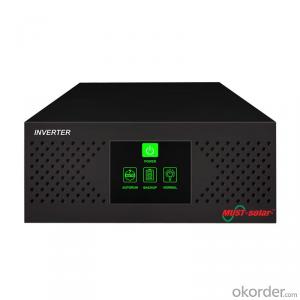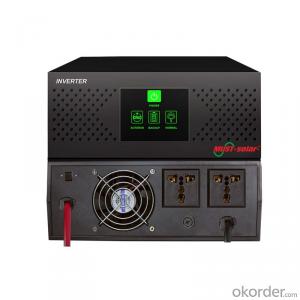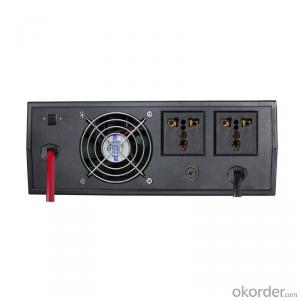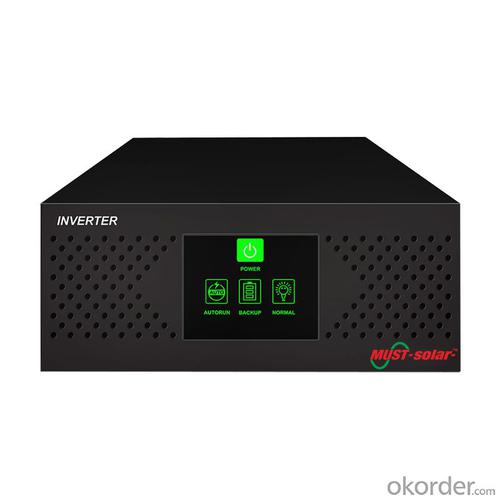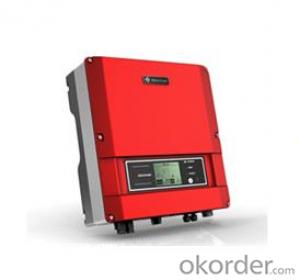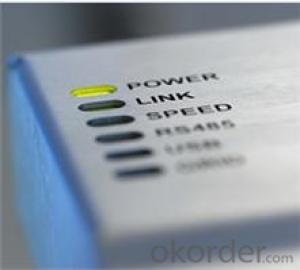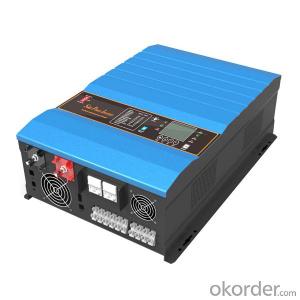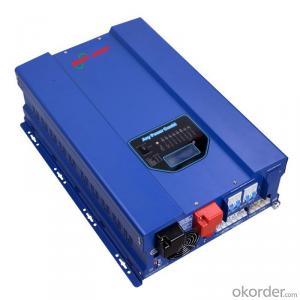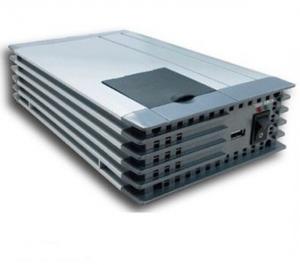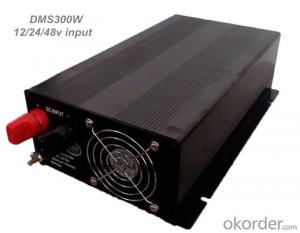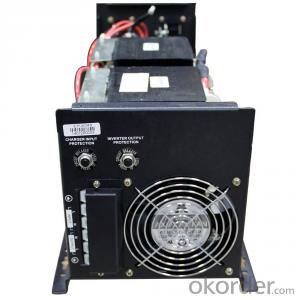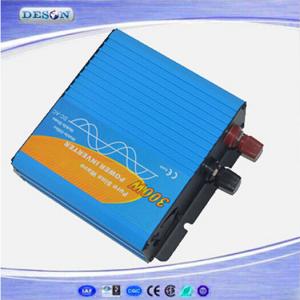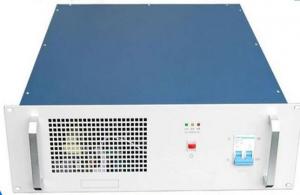Solar Inverter Fault Codes Low Frequency Pure Sine Wave Inverter EP2000 Series 300W/400W Reliable
- Loading Port:
- Ningbo
- Payment Terms:
- TT or LC
- Min Order Qty:
- 50 unit
- Supply Capability:
- 1000 unit/month
OKorder Service Pledge
OKorder Financial Service
You Might Also Like
South Africa EP1000 2000VA/1200W home solar power inverter made in China
The Specification of 2000VA/1200W home solar power inverter
EP modified sine wave inverter is a combination of an inverter and a charge. It offers a smart, convenient and economic way to get AC power supply from DC source for most electrical equipment. When the AC input is available, it will switch to AC power supply and starts charging on the batteries.
The PG series converts DC power into AC power. With a continuous output and compact design, the units is ideal for running TVs, Stereos, Laptop and computers and other home appliances .PG series will automatically transfer to inverter and provide power when AC supply is interrupted unexpectedly.
The Features of 2000VA/1200W home solar power inverter
Automatic line-to-battery switchover
Selectable input voltage ranges, power inverter has wide input range:90-280Vac narrow input range:170-280Vac
Small power inverter has high efficient DC-to-AC conversion, minimizing energy loss
Rack Tower design for flexible placement
Small power inverter built-in enhanced charger 8Amps for up to 100Ah battery
Intelligent 2-stage charger control for efficient charging and preventing overcharge
Overload protection
Auto restart while AC recovery
Multi-function LED indications and buzzer alarms
Small scale and cost effective inverter for home appliance and office equipment
LED indicator of power inverter for the battery mode, AC mode, battery charging mode, overload mode and fault warning
Over 95% efficiency in AC to AC mode
Audible alarm for the low battery, overload, overcharge and fault
Full protection of power inverter against deep discharge, overcharge, overload protection, short circuit, overvoltage and under voltage (compact power inverter)
*** 10A/ 20A charge current adjustable, LCD/ LED available power inverter EP1000 1000w 220vac solar inverter***
The Specifications of 2000VA/1200W home solar power inverter :
Rated Capacity | 500VA/300W | 1000VA/600W | 2000VA/1200W |
1.Input
Models | 120V Models | 230V Models | |
Nominal Voltage | 110V/115V/120V Selectable | 220V/230V/240V Selectable | |
Input Frequency | 47Hz ~ 65Hz, 50/60Hz Auto-Sensing | ||
Efficiency | 95%(Normal Mode) | ||
Noise Filtering | Full Time EMI/RFI Filtering | ||
Over Current Protection | By Re-Settable Over Current Protector | ||
Voltage Range | 90 - 145VAC Or 170-280VAC ( Narrow Range ) 50-145VAC / 90 280VAC (Wide Range) | ||
Surge Protection | 324 Joules | ||
2.Output
Rated Power | 500va/300w | 1000VA/600W | 2000VA/12000W | |
Output Voltage | 100V/110V/115V/120V Selectable | 200V/220V/230V/240v selectable | ||
Voltage Waveform | Modified Sine Wave | |||
Crest Factor | 3:1 | |||
Output Frequency | Auto Select For 50/60Hz | |||
Regulation (Battery Mode) | 10% -18% | |||
Transfer Time | 15ms Typical 50ms Max | |||
Protection | Over Load, Discharge, Overcharged | |||
Battery Type | Lead-Acid 12V 25Ah ~ 250Ah |
Voltage | 500VA/1000VA :DC12V ; 2000VA :DC24V |
Backup Time | Depend On Battery |
Charging Method | 3 Steps Super Charge Mode |
Charging Current | 10A At Normal Line And Normal Temperature |
Protection | Over Current Protection Over Charging Voltage Protection (No More Than 15V) Deep Discharge, Overload Protection |
3.Communications & Management
Control Panel (LED Indicator ) | Ac Mode | Green Lighting |
Battery Model | Yellow Lighting | |
Battery Charging Mode | Green Flashing Every 2 Seconds | |
Over Load | Red Flashing Every 0.5 Second | |
Fault | Red Lighting | |
Audible Alarm | Low Battery | Sounding Every 2 Seconds |
Overload | Sounding Every 0.5 Second | |
Fault | Continuously Sounding |
4.Environment And Safety
Operating Environment | 0~40 Degrees Centigrade, 0 - 90% Non Condensing |
Transit/Storage Temperature | -15°C To 55°C (5°F To 131°F) |
Operating Altitude | 0 ~ 3000 Meters |
Audible Noise | 50dba |
Safety Markings | CE.FCC |
Quality Control System | ISO 9001 |
5.Physical
Dimensions(H×D×W) | 355*130*230mm | ||
N.W / G.W(Kg) | 1.6 / 2 (Kg) | 2 / 2.3 (Kg) | 2.2 / 2.6 (Kg) |
Packing | 6pcs/Carton | ||
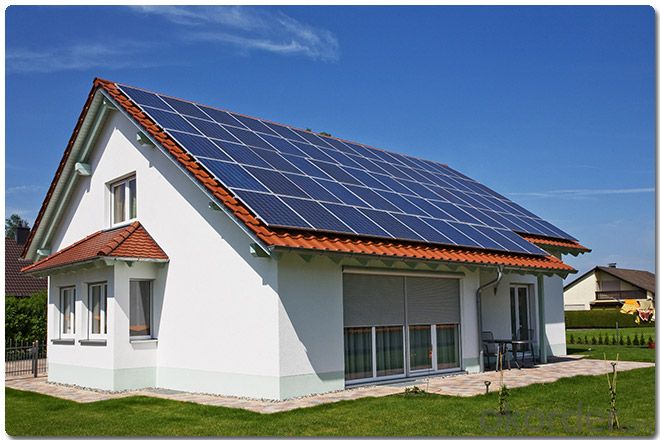
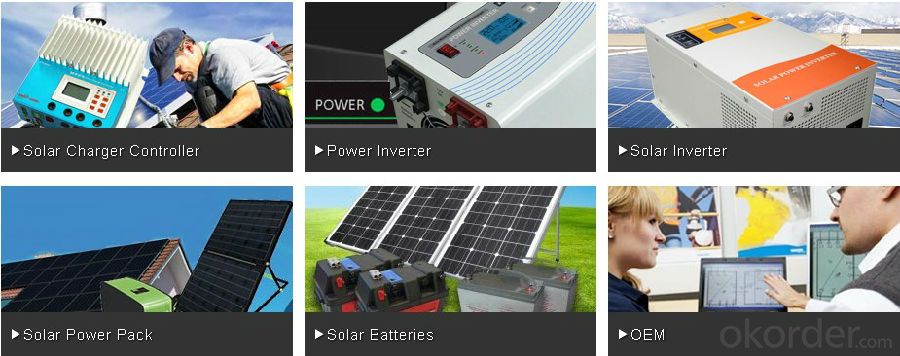
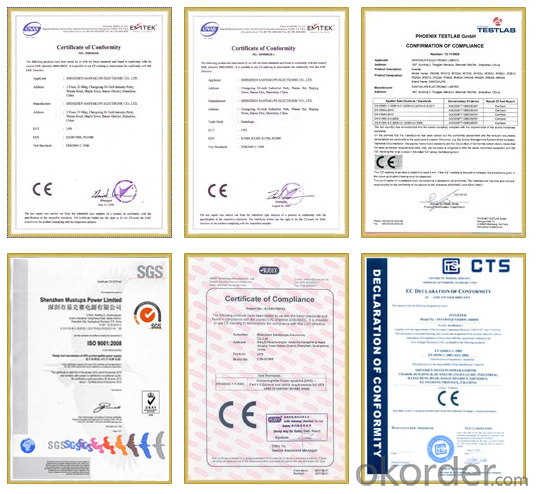
Warrenty
provides a 1~3 year limited warranty (“Warranty”) against defects in materials and workmanship for its Uninterruptible power supply, Power inverter/chargers, Solar charge controllers, Battery Products (“Product”).
The term of this Warranty begins on the Product(s) initial purchase date, or the date of receipt of the Product(s) by the end user, whichever is later. This must be indicated on the invoice, bill of sale, and/or warranty registration card submitted to MUST-Solar. This Warranty applies to the original MUST-Solar Product purchaser, and is transferable only if the Product remains installed in the original use location.
FAQ
1. How do I decide which system is right for me ?
For protection from long outages, include a generator or solar panels in your Must solar system. Shorter outages can be handled by a battery-only system.
2. Where my system will be installed ?
Must solar systems are usually wall-mounted near a home's main electrical (circuit breaker) panel.
3. How do I install my system ?
A must solar backup inverter is connected to a home electric system , we will supply detailed installation manual and videos for our customers .
- Q: Can a solar inverter be used in a ground-mounted solar tracking system?
- Yes, a solar inverter can be used in a ground-mounted solar tracking system. The solar inverter is responsible for converting the direct current (DC) generated by the solar panels into alternating current (AC) that can be used to power electrical devices or be fed back into the grid. Whether the solar panels are fixed or mounted on a tracking system, the inverter's function remains the same.
- Q: What is the role of a bypass switch in a solar inverter?
- The role of a bypass switch in a solar inverter is to provide a means for redirecting the flow of electricity in case of an emergency or failure within the inverter. It allows for the direct connection of the solar panels to the utility grid, bypassing the inverter, ensuring a continuous supply of electricity even when the inverter is not functioning properly. This helps maintain the stability and reliability of the solar power system.
- Q: Can a solar inverter be used in harsh environmental conditions?
- Yes, a solar inverter can be used in harsh environmental conditions. Most solar inverters are designed to withstand a wide range of environmental factors such as extreme temperatures, humidity, dust, and vibrations. They are often built with durable materials and have protective coatings to prevent damage from harsh weather conditions. Additionally, many solar inverters are equipped with advanced cooling mechanisms to prevent overheating in hot climates. However, it is important to note that the specific durability and performance of a solar inverter in harsh conditions may vary depending on the brand and model. It is recommended to choose a reliable and high-quality solar inverter that is specifically designed for use in harsh environmental conditions to ensure optimal performance and longevity.
- Q: PV grid-connected inverter can directly load it?
- Grid-connected inverter is usually equipped with island protection function, can only receive the power grid, if the load directly, the output is disconnected.
- Q: Can a solar inverter be used with a ground-mounted solar array?
- Yes, a solar inverter can be used with a ground-mounted solar array. A solar inverter is responsible for converting the DC (direct current) electricity produced by the solar panels into AC (alternating current) electricity that can be used to power homes or businesses. Whether the solar array is ground-mounted or roof-mounted, the solar inverter plays a crucial role in converting the electricity for use in the desired location.
- Q: How does a solar inverter handle voltage fluctuations from the solar panels?
- A solar inverter handles voltage fluctuations from the solar panels by employing a technique called Maximum Power Point Tracking (MPPT). The MPPT algorithm continuously monitors the voltage and current output of the solar panels and adjusts the operating point to ensure maximum power transfer. This allows the inverter to adapt to varying sunlight intensity and temperature conditions, efficiently converting the DC power generated by the panels into standard AC power. The inverter also incorporates voltage regulation and protection mechanisms to ensure stable and safe operation despite any voltage fluctuations.
- Q: How does MPPT improve the performance of a solar inverter?
- MPPT (Maximum Power Point Tracking) is a technique used in solar inverters to enhance their performance and maximize the energy output of the solar panels. Solar panels generate direct current (DC) electricity, which needs to be converted into alternating current (AC) to be used by household appliances or fed back to the grid. However, the amount of power generated by solar panels varies depending on factors like sunlight intensity, temperature, shading, and panel orientation. MPPT algorithms enable solar inverters to continuously track and adjust the operating point of the solar panels to extract the maximum power available. By continuously monitoring the voltage and current output of the solar panels, the MPPT controller determines the optimal operating voltage and current that will yield the highest power output. This optimization process is crucial because solar panels have a specific voltage and current combination at which their power output is maximized, known as the maximum power point (MPP). By operating the solar panels at their MPP, MPPT significantly improves the overall efficiency and performance of the solar inverter. With MPPT, solar inverters can adapt to changing environmental conditions and extract the maximum available power from the solar panels. This allows for increased energy production, reducing the reliance on grid electricity and maximizing the return on investment in solar installations. In summary, MPPT improves the performance of a solar inverter by optimizing the operating point of the solar panels to extract the maximum power available. This leads to increased energy production, improved efficiency, and better utilization of solar energy resources.
- Q: How does a solar inverter handle variations in solar panel degradation over time?
- A solar inverter handles variations in solar panel degradation over time by continuously monitoring the power output of the solar panels and adjusting its operations accordingly. As solar panels degrade over time, their efficiency decreases, resulting in a decrease in power output. The inverter detects this decrease and adapts its operation to maximize the power conversion and maintain optimal performance. This ensures that the solar energy harvested from the panels is efficiently converted and utilized, despite variations in panel degradation.
- Q: Can a solar inverter be used with a solar-powered electric fence system?
- Yes, a solar inverter can be used with a solar-powered electric fence system. The solar inverter is responsible for converting the DC (direct current) power generated by the solar panels into AC (alternating current) power, which can be used to power the electric fence system. This ensures that the solar-powered electric fence system can operate efficiently and effectively, utilizing the energy harnessed from the sun.
- Q: How does a solar inverter handle voltage dip and interruption?
- A solar inverter handles voltage dip and interruption by monitoring the grid voltage constantly. When it detects a dip in voltage or an interruption, it quickly switches to an internal power source, such as a battery or capacitors, to keep supplying power to the connected solar panels or loads. This ensures a smooth and uninterrupted power supply even during voltage fluctuations or grid outages.
Send your message to us
Solar Inverter Fault Codes Low Frequency Pure Sine Wave Inverter EP2000 Series 300W/400W Reliable
- Loading Port:
- Ningbo
- Payment Terms:
- TT or LC
- Min Order Qty:
- 50 unit
- Supply Capability:
- 1000 unit/month
OKorder Service Pledge
OKorder Financial Service
Similar products
Hot products
Hot Searches
Related keywords
